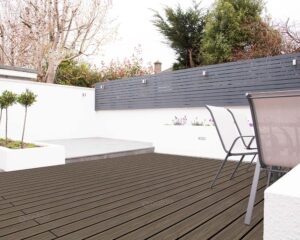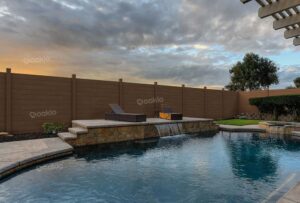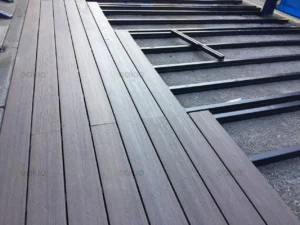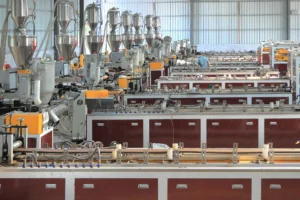Troubleshooting Common WPC Decking Issues
Anyone who has encountered luxurious high-rise complexes and modern beach resorts has most likely walked on decks that are crafted with, appear, and feel like wood—but are actually WPC (Wood Plastic Composite) deck flooring.
WPC decking is a material solution made of wood and plastic. It is quite versatile and popular in many builds today as a long-lived but affordable alternative to wood.
However, while these WPC decking boards are durable, strongly resistant to moisture and mold, eco-friendly, and have the strength of wood, all things degrade and fall apart if not maintained. So, how do you troubleshoot common WPC decking issues? Find out in this article.
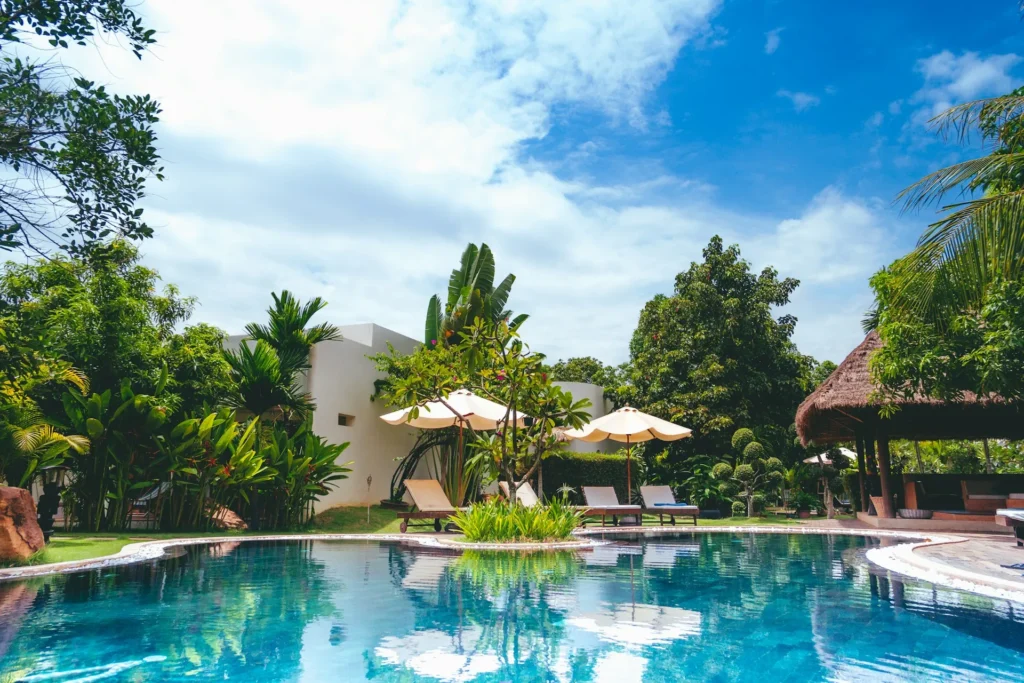
What Causes Warping in WPC Decking?
Warping may decrease the aesthetic appeal of your WPC deck flooring, but this isn’t an issue to be worried about if you take preventive measures. Warping occurs when problems emerge in the gluing between the panel and the core. It happens sometimes with decks that are older or exposed to high humidity. Other causes of warping include improper installation and drastic temperature changes.
Installation Practices
When there are gaps between WPC boards, the material may deform, leading to warping. Additionally, in places with hot and humid water, WPC decking may expand. Another installation mistake is when the decking is installed too close to the walls. While these issues may not appear for months or years, careful observation during the construction period and after is still necessary.
Depending on the severity of the warping, you can repair it yourself or contact a qualified contractor. During repair, you should try to spot the damaged sections first. Then, cut and push the damaged deck boards off the deck before installing the new WPC decking boards.
Material Quality
Warping has a much lower likelihood of happening if you choose the right materials from the very beginning. Low-quality materials are not resilient. They are prone to moisture, uneven thermal expansion, and durability issues much sooner than well-engineered materials like WPC boards.
Environmental Factors
Direct exposure to harsh sunlight, heavy rainfall, intense temperatures, and irregularities in humidity may cause WPC decking to distort and warp. Can these be prevented? Yes. Proper installation, high-quality materials, and protective coatings are necessary for their prevention. After that, it boils down to cleaning and maintenance.
How Can I Prevent Fading on My WPC Deck?
Another issue that your WPC deck can face is fading. Like several other wood products, color can fade over time when exposed to sunlight, rain, and wind. Here’s how you can prevent this:
UV Protection
It is vital to work with WPC decking providers who have products engineered to withstand UV radiation. In a more immediate sense, it protects the deck against bleaching and discoloration from UV exposure. In a long-term sense, it protects the overall integrity of the materials as it prevents UV from damaging the outer surface.
Regular Maintenance
Routine cleaning and sealing are also essential to protect your WPC decking from fading and environmental damage. Specifically, use a gentle cleaning solution designed for wood and plastic composite decking.
Choosing Quality Products
Choosing high-quality products from the get-go can significantly reduce your overall costs in the long-run. In decks and construction, the saying goes: you get what you pay for. It may cost a little more to invest in higher-quality products in the beginning, but it can mean the difference between replacements in five years and repairs in fifteen.
Oakio offers a catalog of innovative WPC decking solutions designed to withstand the harsh elements of nature, offered at affordable WPC decking price ranges. One of this brand’s products is Proshield Decking, which features ultra, stain, and wear-resistant features for greater strength and durability, ensuring maximum protection.
What Should I Do About Mold and Mildew Growth?
Maintaining your WPC decking boards is crucial to preserving the quality of your property.
Mold and mildew can likewise become a nuisance for your WPC decks.
Identify Moisture Sources
Standing water or poor drainage on WPC decks creates persistently damp conditions, attracting mold growth. Moisture trapped in crevices becomes home to fungal spores, discoloring the surface and compromising the material’s durability.
Insufficient slope design, blocked drainage systems, or pooling from rainwater can also worsen the problem. Proper water management is a must, and it might be worth it to consider an under-deck drainage system. .
Use the Right Clean Solutions
Implement the right cleaning solutions to treat mold without damaging your WPC boards. You can use a solution of water and a natural product—a gentle soap, baking soda, or diluted cleaners.
Before cleaning, grab a broom or leaf blower to remove loose debris like leaves, branches, and dirt. This can prevent scratches during cleaning. Don’t forget that, before applying the cleaning solution, you must first rinse the deck with a garden hose or a pressure washer at a very low setting.
Enact Preventive Measures
At the end of the day, it’s all about incorporating preventive measures. Regularly inspect your decks and carry out appropriate maintenance practices to prevent the accumulation of moisture. Check for damage, wear, or discoloration.
How Can I Fix Scratches on My WPC Deck?
WPC decks are not just for display. They will be subjected to foot traffic, furniture movement, pets, and more—which likely means scratches. To fix scratches, adhere to these techniques:
- The first step to repair scratches on your WPC decking is cleaning the area. Make sure to consult the manufacturer’s instructions for treating scratches, as different products may have different methods of maintenance. In some cases, lightly rubbing the affected area with sandpaper can remove minor scratches. For deeper scratches, heat guns can soften the material, allowing the scratch to melt back into the board.
- You will have to move your furniture around from time to time. Placing pads under your furniture to prevent scratches and dings on your deck.
- Lastly, look for tell-tale signs that boards need to be replaced. These include deep and widespread scratches, and when sanding or heat treatment are not capable of resolving the issues.
Conclusion
Your WPC deck’s lifespan can reach up to about 15–25 years with proper maintenance. However, it is still very important to identify issues that may arise and address them before it’s too late.
Oakio can help you maintain your WPC deck. As a leader in composite wood manufacturing has perfected its products, we offer sustainability and versatility you won’t find elsewhere. Subscribe to the Oakio newsletter to learn more about this brand, read about its comprehensive guides and tips, and get access to exclusive discounts.
Trending Reading
What Are the Differences Between the WPC Board and PVC Board?
[2025 Update] How Long Does WPC Decking Last?


